2006 Mini Cooper Reviews
You'll find all our 2006 Mini Cooper reviews right here. 2006 Mini Cooper prices range from for the Cooper to for the Cooper .
Our reviews offer detailed analysis of the 's features, design, practicality, fuel consumption, engine and transmission, safety, ownership and what it's like to drive.
The most recent reviews sit up the top of the page, but if you're looking for an older model year or shopping for a used car, scroll down to find Mini dating back as far as 2002.
Or, if you just want to read the latest news about the Mini Cooper, you'll find it all here.
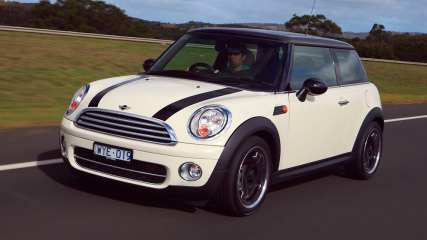
Used Mini Cooper review: 2002-2014
Read the article
By Ewan Kennedy · 05 Mar 2015
Launched to an amazed world in 1959 the Mini became a huge success worldwide as well as in Australia, with it being built in Sydney for years. It faded from the 1980s onwards though some variants were still being made overseas till the year 2000. The British motor industry was in serious trouble for many years and
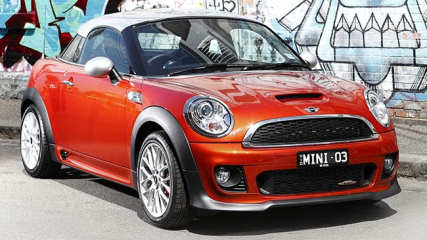
Used Mini Cooper review: 2002-2013
Read the article
By Ewan Kennedy · 24 Feb 2014
Despite sceptics having serious doubts about the new Mini when it was launched in the UK and Europe 2001, it has been a big success.
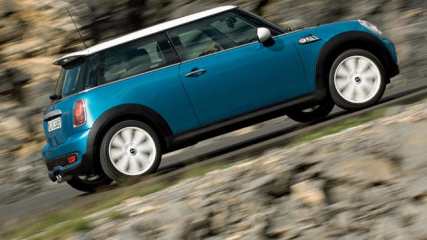
Used Mini Cooper S review: 2002-2011
Read the article
By Graham Smith · 21 Mar 2012
It's a testament to the ability of the new Mini's designers that its freshness hasn't diminished once the initial excitement of its launch faded. Doing a retro model is perhaps the most difficult of things to pull off, but the Mini men appear to have done it.The initial 2002 model paid proper homage to the much-loved original classic. The first new-age model was a fun-filled little car that revived memories of the original for anyone who was old enough to remember, but it also packed its own appeal for a younger generation.It was that generation that would determine the on-going popularity of the Mini, so keeping it fresh was critical if the Mini was to be around for the long term. The R56 refreshed the Mini with a raft of changes from a new body to a turbocharged engine in the Cooper S, but importantly it remained true to the Mini model.While it remained true to form it didn't compromise on the things required of a car in today's demanding world. As a result the R56 had more power and economy, as well as increased space, comfort and refinement.The cabin of the new model was roomier, the view from inside was brilliantly clear and unobstructed, although there was some criticism of the huge, centrally mounted speedo. The base engine was a 1.6-litre BMW-developed four that had to be stirred along to get the most out of, but the pick of the engines was clearly the new turbocharged version in the Cooper S that adds extra grunt to increase the thrill of the drive.New six-speed gearboxes, manual and auto, also add to the fun. Central to the Mini theme is its chassis with the wheels placed at the corners to give as big a footprint as is possible with a smallish car. The footprint coupled with the tautness of the chassis makes the Mini agile and responsive - just plain fun to drive on a twisty road. The Cooper starts the range, then there's the turbocharged Cooper S, and on top of that each has an optional Chilli pack that boasts bigger alloy wheels, leather and cloth trimmed sports seats and 10 speaker sound.IN THE SHOPThere is nothing to suggest the Mini has any serious issues that should stop you buying one. It's generally well built and quite reliable.The issues that tend to be reported are more one-offs than widespread, and mostly relate to build quality issues. Relatively minor things like remote door locks, window winders etc. are the components most reported. Check for a service record before buying, and have a Mini specialist mechanic check it over.IN A CRASHSix airbags, together with stability control and cornering braking control as well as ABS braking and its associated systems give the Mini an impressive safety arsenal, enough to win five stars from ANCAP.AT THE PUMPMini's makers claimed the Cooper would average 5.8L/100km, the turbocharged Cooper S 6.9L/100km, but on test the Cooper averaged a real-life 8.4L/100km.AT A GLANCEPrice new: $31,100 to $43,500Engine: 1.6-litre 4-cylinder; 88 kW/160 Nm 1.6-litre 4-cylinder turbo; 128 kW/240 NmTransmission: 6-speed manual, 6-speed autoEconomy: 5.8 L/100 km (1.6), 6.9 L/100 km (1.6T) Body: 2-door hatch, 3-door wagon Variants: Cooper, Cooper Chilli, Cooper SSafety: 5-star ANCAP Green: 4-star (Cooper), 3.5-star (Cooper S)VERDICTGreat driving, great looking, fun-filled little car perfect for those who enjoy the drive.COMING UP Do you own or have you owned a Toyota Prado? Share your experience with other Carsguide readers by sending your comments via e-mail to grah.smith@bigpond.com or write to Carsguide, PO Box 4245, Sydney, NSW, 2010.
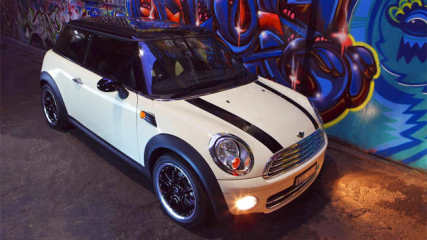
Used Mini Cooper review: 2002-2011
Read the article
By Ewan Kennedy · 09 Mar 2012
The new Mini, now owned by BMW, has been a huge success since its launch in Australia in March 2002.Partly because it’s a competent vehicle, but principally due to the fact that geniuses in the marketing have positioned it as a fashion item, not simply a car.As a result of Mini magazines, Facebook pages and numerous owners’ clubs, Minis have been customised in an extraordinary number of fascinating ways. Some of the prices paid are staggering, with the most expensive new Mini in Australia to date topping $100,000.Driving enjoyment is another factor in the car’s success. As a dynamic automotive for the keen driver the BMW Mini is close to perfect. The new Mini has steering that's almost kart-like in its response, in fact it’s almost too quick and first time drivers can get taken by surprise at times.The suspension assists the tyres to grip the road like grim death and the big disc brakes stop hard and straight.On the downside, the ride is fairly harsh and may prove too much for some occupants when it’s cruising on rough Aussie bush roads. The two top versions of the Mini are sold in Australia – the lower cost model, the Mini One, isn’t imported.The Cooper S is the hotshot, having its 1.6-litre engine supercharged prior to the introduction of the new model in March 2007, and turbocharged from then onwards.We really like the supercharged engine, because its torque comes in virtually instantly, whereas the turbo unit inevitably has a slight lag before delivering its all.The supercharged engine has a glorious shriek when you get stuck into it, a sound that’s loved by keen drivers with memories of supercharged racing cars. Externally, you can pick the Cooper S by the bonnet slot for the turbocharger’s intercooler, its chromed side grilles and fuel-filler cap, a small wing protruding from the rear of the roof, twin exhausts and larger (16-inch) alloy wheels.Sports seats have the option of full-leather or cloth/leather, the latter probably the better bet for hot Australian conditions. The steering wheel and gear lever knob are finished in leather and there are aluminium door sill plates carrying Mini Cooper S logos.A Mini cabriolet was launched late in 2004 and has an excellent opening roof system. Not only can it be used to make the Mini an open convertible, but also as a closed car with an open sunroof. The new cabriolet didn’t arrive in Australia until March 2009, two years after the launch of the Mark 2 coupe and it seems likely the two bodies will continue to be out of chronological order from now on.Topping out the Mini range is the Cooper S with the works – the John Cooper Works that is. The Cooper company specialises in improving Minis, both the original models and the new 21st century machines.Engine work on the new Mini is extensive and includes an Eaton supercharger in place of the Rootes unit fitted to the standard Mini Cooper S. Turbo engines in the later JCW’s rely on extra boost, with overboost on offer if you want to get really serious.Early in 2012 a coupe and roadster were added to the Mini range, it’s too early to comment on these as used cars. The new Mini network is well established in Australia. Almost all dealers are in suburban areas, which could lead to hassles if you’re unlucky enough to strike a problem in remote country.Being part of the BMW organisation gives the Mini major advantages in technical backup. Spare parts and servicing charges aren't unreasonable for a car in this class, meaning they are higher than for a typical small car. While it’s possible to do some of your own routine servicing, we suggest you stick with the professionals for all but the most minor tasks, and don’t even think of touching areas that can compromise safety.Most new Minis belong to doting owners and are serviced by the book. You will probably be happy to pay the extra asked for one of these pampered cars – it’s money well spent. Insurance costs are quite high, even more so for one of the ‘charged’ engines. Shop around for insurance, especially if you are young and/or inexperienced.But be sure to make direct comparisons between insurance companies and understand what you're getting – or not getting for your premium dollar.WHAT TO LOOK FORCheck for crash damage, or previous smash repairs. Mismatched paint colours from one panel to another are a good clue – do the inspection in strong light. Also look for ripples in the panels, most easily seen when viewed end on. Tiny drops of paint in unpainted areas like lights, windows and badges are another clue to a respray.Be very wary of a Mini that has been fanged during track days or at a drag strip. Look for a roll cage, lowered suspension and additional instruments. Keep in mind they may have been put back to standard before going on sale.Look over the interior for signs of damage or wear and tear. Don’t forget to check the boot.Check for signs of water stains in a cabriolet, ask to have the carpets removed to check the floor under them. Dry carpets may be new units, so don’t necessarily mean the car hasn't been caught in the rain...Make sure the engine starts easily and idles smoothly. Watch for a puff of smoke from the exhaust when it first kicks over and again when it’s accelerated hard during your road test. Make sure all gear changes are light, easy and quiet. The continuously variable transmission (CVT) fitted on early automatics has unusual sounds during its operation (engine sound, that is, the transmission should be quiet) if you haven’t driven one of these before it’s smart to call in an expert.CAR BUYING TIPWhen looking at any sporting car be sure to avoid one that’s been thrashed. A professional inspector is invaluable in providing advice.
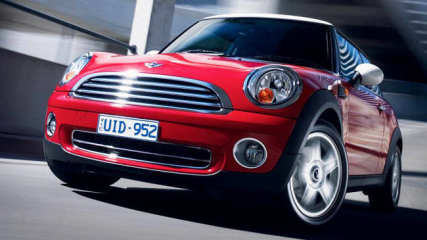
Used Mini Cooper review: 2002-2007
Read the article
By Graham Smith · 29 Jul 2010
Attempting to reinvent the past is fraught with danger; the motoring graveyard is full of brave, but misguided attempts to breathe new life into past glories. It's hard to recapture the essence of an older model, to take the thing that made it the runaway success it was and mould it into something as meaningful to today's car buyer.Of all the re-born classics carmakers have tried to pass off on the motoring public in recent times the Mini has clearly been the best and most successful. The new age Mini not only looked passably like the old one, it had the feel of the old classic as well.MODEL WATCHIt's fair to say that the original Mini was an accidental classic. It's designer, Sir Alec Issigonis, set out to make an efficient, affordable family car for a country still suffering the ravages of a debilitating war.The efficiency was delivered through a clever packaging approach that employed a boxy body, a wheel planted at each corner, and with the engine swung through 90 degrees from tradition to create a tiny car with a roomy cabin.With a modest engine, manual gearbox and few frills Issigonis's Mini achieved exactly what its designer intended. Cute looks added to its appeal and the Mini became an instant hit with car buyers all over the world.But it was to become much more than a cheap and cheerful means of family transport when revheads of the time discovered its stable chassis could easily handle much more power than it had in its standard form.Grand Prix car designer, John Cooper, was employed to develop a special Mini, one with high performance and nimble handling that was heaps of fun to drive. The hot Mini Cooper was the first of Cooper's creations, the next was the even hotter Mini Cooper S that followed, both of which are much-loved classics today.The popularity of the little car was boosted enormously when London's trendy "in" crowd adopted it as their favoured means of transport. Appearing in movies such as 'The Italian Job' also helped massage the Mini legend.With such a history BMW was under close scrutiny when it set about recreating the Mini in the early-2000's. Fail and they would have been the laughing stock of the motoring world, but if they got it right they would have a winner on their hands.Fortunately for the German automaker they got it pretty much right, and its new-age Mini was greeted with enthusiasm. The new Mini was much larger than the original car, but BMW managed to capture the cute looks and proportions that made the original so popular with the result that the new car doesn't look nearly as large as it is in reality.Like the original there was a wheel at each corner, which along with its well-tuned suspension produced a nimble chassis that was thrilling to drive. One of the few criticisms of the BMW Mini was of the ride, which was thought to be a little too firm for most modern day rear-ends.Initially BMW launched the Mini Cooper with a 1.6-litre single overhead camshaft four-cylinder engine boasting 85 kW and 149 Nm, but followed up with the Mini Cooper S that had a supercharged version of the engine producing 120 kW and 210 Nm.In standard Cooper guise buyers could choose between a five-speed manual gearbox and a five-speed CVT auto, while the Cooper S only came with a six-speed manual.An update in 2003 saw the five-speed CVT replaced by a six-speed CVT auto. Being upmarket models the Cooper and Cooper S had heaps of standard features.Externally there was the retro paint style with a white roof, alloy wheels, lashings of chrome on things like the door handles, grille and exhaust tip. On the inside there was cloth trim, a leather steering wheel, a split-folding rear seat, air conditioning, CD sound, power windows and mirrors, remote central locking and a trio of cup holders.When it followed the Cooper S had leather trim, sports seats, larger alloys and sports suspension.IN THE SHOPThe Mini is generally a solid performer, but there are a couple of known problems areas. The power steering is noisy, and there are reports of the failure of the power steering pump.The CVT transmission could be troublesome and should be carefully checked by someone experienced with this type of transmission. The manual gearbox is the best choice for a fun drive. Run-flat tyres are expensive and contribute to a firm ride some find uncomfortable.IN A CRASHThe Mini's underlying strength is its stable platform and nimble handling, with predictable power steering and power ABS anti-lock brakes, electronic brakeforce distribution and traction control.In Cooper S guise it also boasted electronic stability control for even more active safety. Overlaying the active safety was a comprehensive passive safety package of front, side and head airbags. ANCAP rated the new Mini at four stars.AT THE PUMPMini owner Frank Bradley says he gets 8.9 L/100 km on around town, and 5.7 L/100 km cruising at 100 km/h on long trips. Those figures closely match the official BMW numbers of 8.5 L/100 km in city driving and 5.6 L/100 km on the highway, but road testers reported fuel consumption of around 10 L/100 km from cars they tested.OWNERS SAYFrank Bradley bought his manual Mini in 2002 when they were first launched and says he would buy another one if and when he was to sell it. He uses it as his daily driver, but it's also become his hobby car since he joined the Victorian Mini Club. His likes include the unique styling, the precise handling, the drivability, incredible brakes and the build quality, while his list of dislikes include the front seat comfort and the noisy power steering pump.Glenys Tidd and her husband have two Minis and says that they would have more room if they had the room. He uses his 2002 Cooper S for longer trips to the city from their country home when he likes the performance; she drives a 2008 Mini Clubman wagon for the room and the economy. They both have a lot of fun driving their Minis and say anyone with a complaint is not really a Mini person.LOOK FOR. Cute classic looks. Agile chassis. Fun-filled driveALSO CHECK THESE. VW GTi - 2005-2007The VW Golf is the real successor to the original Mini, the GTi the successor to the Mini Cooper and Cooper S, using the same formula of brilliant packaging and sizzling performance. The GTi sets the hot hatch benchmark. Pay $25,000-$30,000.. FORD FOCUS XR5-T - 2006-2007Like the rest of the auto world Ford took up the Mini philosophy and built on it with cars like the Focus XR5, the hot sports hatch in the Focus range. Terrific performance, great handling, an excellent all-rounder. Pay $25,000-$27,000.. PEUGEOT 206 GTi 180 - 2004-2007Peugeot and VW were constant contenders for the hot hatch title after the departure of the original Mini. The 206 GTi 180 delivered a genuinely sporty ride with a punchy engine and excellent chassis. Pay $16,000-$22,000.THE BOTTOM LINEFun-filled driver that successfully recalls the past.

Mini Cooper S 2006 review
Read the article
By Staff Writers · 15 Oct 2006
It's the all new Mini, looking only slightly different to its most recent predecessor, but hiding new machinery at its heart. The new Mini Cooper S won't arrive in Australia until the first half of next year and while pricing hasn't been released, it is expected to have a "modest increase" over the current generation, which starts at $39,990 for the Cooper S manual. But the anticipated price rise can be explained through some significant changes.The new version of the car will have a BMW Group 1.6-litre turbocharged, four-cylinder engine, produced at Hams Hall plant in England. The current supercharged engine, produced in Brazil, came out of an arrangement the BMW Group had with Chrysler.This means its previous supercharged growl has disappeared. But not to fret, the new turbo still impresses.The second generation produces slightly more power with 128kW at 5500rpm and 240Nm at a low 1600rpm to 5000rpm with an overboost lifting the reading to 260Nm. The current model delivers 125kW and 220Nm.While a new version of the Mini Cooper will also be a part of the line-up, the Cooper S was the only model tested on the launch.The winding roads and motorways of Spain were a great setting to push the new Mini Cooper S to its limits. It handled well around narrow, tight corners, gripping the road comfortably, with its low centre of gravity and go-kart like performance.The steering and ride was stronger on the model fitted with sports suspension.Although this doesn't come as standard, the difference can be felt with a more sturdy drive, while the lower profile and bigger tyres also contribute to the improvement.With an ever so slight lag, the Cooper S officially shoots from 0 to 100km/h in 7.1seconds. The new Mini is slightly longer in dimensions, although you can't really tell by looking at it. The extra space provides more room in the engine bay, which has also been adjusted to accommodate future pedestrian safety standards, with more room between the body and the engine.On the outside, the new front radiator grille is now one complete unit and changes have been made to the front lights. The front end has also been given a more masculine look, with the engine compartment lid curving up.The rear and the shoulders are more powerful and sportier in design and changes to the exterior are topped off with chrome insignias.The inside feels much roomier, especially for the front passenger who enjoys considerable leg room for such a small car.Even the space in the back seems to be a little more generous than before, although long trips would still be a challenge for most adult passengers.An unusual feature on this car, boasted by the BMW Group as the only premium small car in the world, is the very large speedometer which sits on the middle of the dash. This was a feature on the previous model overseas but was changed for the Australian market to meet ADR (design rule) requirements.But as these have now merged with European regulations, Australia's new Mini will also feature this large speedometer, bigger than the previous European model to allow extra room for an optional satellite navigation system.While you can appreciate the nostalgia of mirroring the location of the speedometer from the original Mini, you do find yourself forgetting to keep an eye on your speed, as well as the fact that lead-foots will be quickly caught out by everyone else in the car.Sitting a great distance from the tachometer, it also takes some of the fun away from monitoring the speed and revs at the same time. Needless to say, it's not the most practical of locations.The dashboard styling has changed and buttons for the stereo and airconditioning are very straightforward and easy to use. The new seats also make a difference, holding your body firmly in place.The six-speed manual transmission took some getting used to, as it's a little rough in shifting and reverse was particularly hard to find at first. Fuel consumption on the new Mini comes in at a claimed 6.9-litres per 100km.The new Mini is not short on safety features. Six airbags, ABS, Electronic Brakeforce Distribution, Cornering Brake Control and Automatic Stability Control and Traction are all standard on the Cooper S.The Mini was particularly a good vehicle to trial as a left-hand drive, as well as driving on what is ultimately the wrong side of the road for an Aussie girl. Apart from grabbing the driver's door to change gears a couple of times, the experience was smooth sailing.The Cooper S is a great little agile performer and there's a lot of fun to be had in the driver's seat, pumping the accelerator and letting your hair down.As mentioned, the new generation will also include the Cooper, with a 1.6-litre, four-cylinder engine, with 88kW at 6000rpm and 160Nm at 4250rpm. It has a claimed fuel consumption of 5.8-litres per 100km.The current generation of the Mini will be manufactured until December and the Cabrio will not be updated either.

Mini Cooper 2006 review
Read the article
By James Stanford · 29 Apr 2006
But times have changed. The new generation of BMW-developed Minis were developed as prestige models - often the second car for a family who owns a bigger Beemer.The agile new Mini Cooper and Cooper S arrived in 2002 and have sold strongly.We have already seen the faster Works specials, but Mini is adding to the appeal with two new special models, Checkmate and Park Lane.These are effectively trim and equipment packs available on Cooper and Cooper S models and cost an extra $4600.That means a manual Cooper with either pack costs $34,500 and a supercharged Cooper S with either pack $43,500.The Checkmate adds special 17-inch alloy wheels, firmer suspension, sports seats, unique checkmate livery, bonnet stripes, unique interior trim and a sunroof.The Park Lane is all about luxury. It has grey leather seats and a two-tone leather-wrapped steering wheel.Available only in grey, the posh Mini adds climate control airconditioning, extra chrome touches inside and out, Harman/Kardon premium CD sound and 16-inch alloy wheels with run-flat tyres.There is nothing revolutionary about the new Mini additions, but their arrival gives us an excuse to go for a spin in the fun little model - we pick the Cooper S Park Lane.For those who might have missed it, the Cooper S has a supercharged 1.6-litre four-cylinder engine with 125kW and 220Nm and is front-wheel drive.It is 1215kg, which helps it do 0-100km/h in 7.2 seconds.This isn't lightning pace, but straight-line speed is not what the Mini is about. This car is about agility.An early morning run along the Great Ocean Rd confirms how much fun you can have in the Cooper S.The hatch is at home on the slippery wet, twisting tarmac. It is great fun to wind up the small engine and tip the Cooper S into the turns.With the supercharger whining away as it spins up, the Cooper S makes it feel like you are going faster than you really are.The standard Cooper engine is an ancient four-cylinder with a single overhead camshaft (rather than two) which means it is bit of a slug, but the boosted Cooper S engine is great. The extra torque of the supercharger is the big difference and means you can leave it in third for most of the bends. Its exhaust also emits a snap and crackle when you back off the throttle and let the engine slow - a nice touch.The front-wheel-drive Cooper S has excellent traction, even on greasy wet tarmac.Even with a supercharger bolted on, there isn't a mass of power surging to the driven wheels, so you can easily feed in the power as you exit turns.The six-speed manual does the job, but is a bit cumbersome. You really have to thrust the lever sideways and forward with a lot of force to select reverse and it is easy to get first gear instead.The ride in the Cooper S Park Lane is firm - expect to get bumped around a fair bit on uneven roads.It doesn't really spoil the drive, but is out of step with Mini's own description of the car as a "VIP lounge on wheels".The Mini has four seats, but only the front two have any reasonable legroom. Small children would be OK in the back, but larger passengers would find it a squeeze.The Park Lane's premium sound system is awesome, the speakers look cool. Boot space is limited, but you can fit in a few bags of shopping.What it lacks in practicality, the Cooper S makes up for in charm.It really is one of the most popular cars we have tested and makes a lot of people smile.




